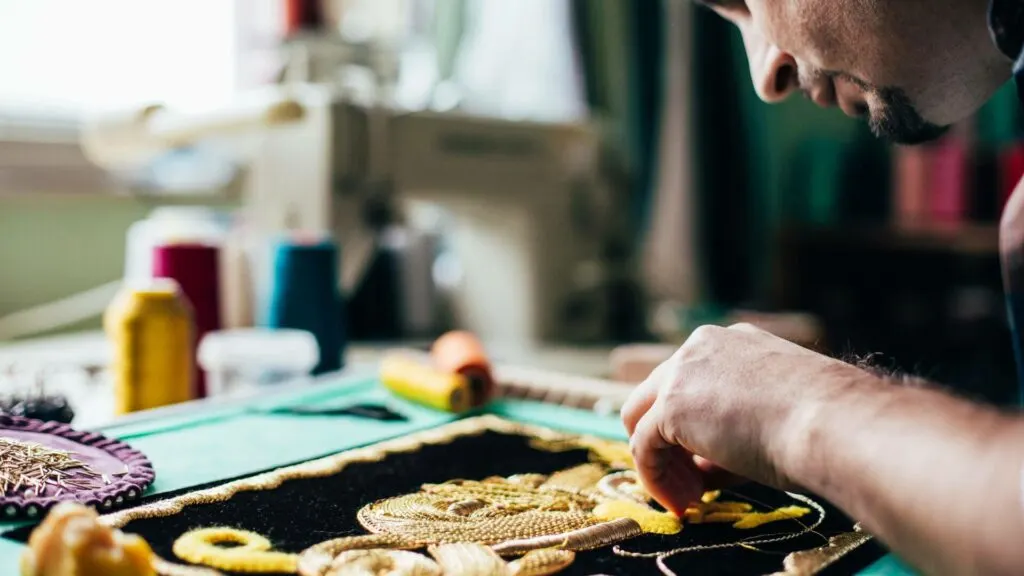Embroidery is one of the oldest and most significant forms of textile art. It has been around for centuries and remains a popular choice for embellishing garments, accessories, and home decor. Custom embroidery, in particular, has seen a resurgence in popularity in recent years. The desire for unique and personalized items has skyrocketed, whether for brand merchandising, fashion, or personal gifting. But what goes into crafting the perfect custom embroidery?
Custom embroidery is a craft that is both beautiful and practical. The process begins with an idea, often inspired by nature, culture, or personal experiences. The artisan then translates this idea into a sketch, carefully planning the layout, colors, and types of stitches. In this blog post, we will delve deeper into the craftsmanship behind the art of custom embroidery and what it takes to create the masterpiece.

Unveiling The Artistry in The Craftsmanship
The first step in custom embroidery is to select the design. This is where the expertise of an embroidery designer comes into play. Embroidery Services will have a designers create a simple sketch or idea using stitches, thread, and techniques. They will consider factors such as the size, shape, and color of the embroidered item, the intended use and the type of embroidery machine used. Once the design is finalized, it is digitized into a format that the embroidery machine can read.
The actual embroidery process is a mix of art and science. It involves precision, attention to detail, creativity, and flexibility. The embroidery machine is programmed to follow the digitized design, stitch by stitch, thread by thread until the final result is achieved. The embroiderer will monitor the machine closely, adjusting tension, color, and thread breaks. They will also need to keep track of the order in which the stitching is done to ensure the design is properly aligned.
The quality of the embroidery hinges on the skills of the artisan. Hands-on experience and technical expertise are essential to creating high-quality designs. The right stitch technique, thread tension, and needle size/craftsmanship all play a role in creating masterpieces. Artisans typically use hoops and frames to keep the fabric taut and prevent it from moving. This allows them to get the needlework precise and exactly how the client wants it.
Factors That Affect The Custom Embroidery Results
Custom embroidery is an art form that requires skill, creativity, and attention to detail. However, like in any art form, the quality of input affects the quality of the results. The following are some factors that could affect the custom embroidery results.
Materials Used
The thread used in embroidery is typically made from cotton, silk, or rayon. The type of thread used will depend on the embroidered design and the desired effect. The fabric used can also have an impact on the embroidery. Certain fabrics, such as cotton and linen, are better suited for embroidery because they are more stable and less likely to stretch out of shape.
The Type of Embroidery Machine
There are many embroidery machines, from single-needle machines to multi-head machines. Some machines best suit certain fabrics or designs, while others can handle various materials and styles. A good embroiderer will have a thorough understanding of the capabilities and limitations of their machine and will use this knowledge to deliver the best possible result.
Design
A unique, original design can be made better and more impactful with the right embroidery techniques. The embroidery person needs to understand the design to execute it beautifully. A known saying in the industry is, ‘The design is only as good as the person who executes it.’ Also, the embroidery design needs to be compatible with the fabric it will be embroidered onto to ensure the piece’s longevity.
Quality of Embroidery Thread
Hundreds of shades and types of thread are available, each with its unique properties. Some threads are stronger, others are softer, and some have a subtle shimmer or sheen. The choice of thread can impact the final appearance of the embroidery, as well as its durability over time. A skilled embroiderer will select the right thread for the job based on the embroidered item’s design, fabric, and intended use.
Conclusion
In conclusion, custom embroidery is a craft that requires a lot of skill, attention to detail, and precise technique. It’s a process that involves the stitching technique, the type of thread and fabric, the design, and the artisan’s skills. This unique art form is not only beautiful, but it is also incredibly functional and durable. Whether you’re looking for a personalized gift or want to add your touch to a piece of clothing, custom embroidery is an excellent option. So, the next time you see an embroidered piece, take a moment to appreciate the art and craftsmanship that goes into its creation.

Jessi is the creative mind behind The Coffee Mom, a popular blog that combines parenting advice, travel tips, and a love for all things Disney. As a trusted Disney influencer and passionate storyteller, Jessi’s authentic insights and relatable content resonate with readers worldwide.
